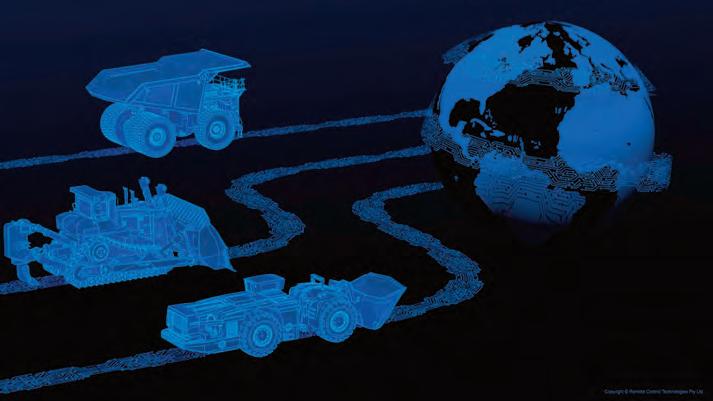
31 minute read
MINING AUTOMATION
Driving autonomy forward
Paul Moore spoke to five companies all playing different roles in driving automation in the mining industry forward from robotics to complete mine solutions about the latest technologies, the driving factors and of course how autonomous mining will evolve
Advertisement
Starting with a look at the big picture and applying the latest in autonomous solutions from pit to port, ABB has pioneered some of the world's most significant technological advances in mining control systems including automation of assets such as conveyors and mineral processing plants.
ABB Global Product Line Manager Marcos Hillal told IM that mines are becoming increasingly interconnected, resulting in new opportunities for the automation and digitalisation of key process controls: “Perhaps more than any other large, capital-intensive industry, mining has the most to gain from increased automation in terms of productivity, safety, sustainability and ultimately, profitability.”
As an example, mines are also energy and resource intensive. Reducing CO₂ emissions from mining operations in line with global climate policies and mitigating their impact on the environment and surrounding communities are other key drivers. “Autonomous systems that can modify their behaviour without manual intervention in response to unanticipated events can help address all of these challenges.”
Inspired by the automotive industry, Hillal says ABB has identified a taxonomy of mining autonomy comprising five levels (there could still exist a sixth level that represents no automation in place, known as level 0). In the automation scale, level 1 would represent the minimum level where some functionalities were automated, but most of the tasks and decisions remain the responsibility of the operator to a full autonomous operation at level 5 where all decision making and actuation is done by the system.
“The mining industry is poised to enter level 3, where sophisticated expert systems become more accessible, but is still some way off full autonomous operation in all situations where no user interaction is required. For this to occur, all the different operational areas of the mine will need to work together using innovative solutions such as the ABB Ability™ Operations Management System, which integrates mine operations and processing plants.”
At the mine, Hillal says OMS connects workforce and equipment in real time to perform production scheduling, automated execution and react to disturbance in seconds. At the processing plant, OMS can provide analytical insights and bridge the complete value chain. Mine operators are looking to technologies like this to harness the power of a large volume of data and translate it into actionable information when it is required.
ABB Ability™ System 800xA works beyond a regular distributed control system (DCS) platform, that only takes care of process control. It is an integration OT layer that connects multiple automation tasks and information to consolidate data and provide to operations an integrated environment to control the plant in a safe and productive way, by promoting collaboration and avoiding islands of automation. “The ABB Ability™ Camera Connect is a good example of that, bringing to the plant operator this additional information as part of control levers, something that in the past was handled separately and not associated with the real operational control.”
ABB embeds its video system in its 800xA DCS for more efficient process control, such as fine-tuning the flotation process. Using cameras, it is possible to monitor the entire extension of a conveyor belt, over several kilometres. If the motor transporting ore from the mine to processing trips due to an excess of materials, for example, the problem can be assessed without the need to send someone in a vehicle or on foot.
“In this way, remote monitoring improves workplace safety by removing personnel from hazardous environments. Rather than sending personnel on site to attend a tripped equipment alarm, the control room operator can visualise the problem on-screen, reducing costly downtime, or ensure that no personnel are present when engineers are powering 13.8kV substations on or off.”
Digital twins – virtual replicas of physical
RCT's ControlMaster® automation technology includes Multi Machine Control (MMC) capability and most recently, Multi Fleet Select (MFS), which allows equipment operators to control multiple types of machines in the underground mine from a single operator station
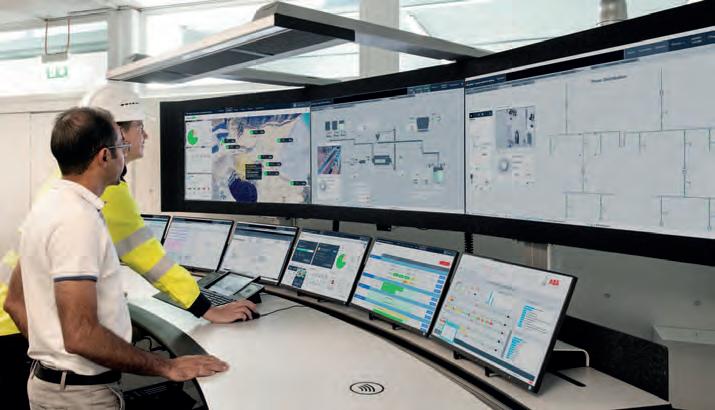
Control mastery
Paul Moore spoke to Ryan Noden, Business Development Manager –Mining at RCT about its place in the industry as one of the world’s leading suppliers of underground and increasingly surface autonomous mining technology centred on its ControlMaster® offering
Q Has the COVID-19 pandemic changed your business model in terms of how you manage your automation technology mining customers worldwide?
A Given the current difficulty mobilising technicians to many of our customer sites around the world, we have put significant investment into what we call our operational technology team. This team is facilitating remote desktop support, for example coming into a client’s network and being able to diagnose system issues affecting the operation of their fleet. In addition, this team provides technical oversight to the engineering and maintenance team to enable them to conduct any necessary refinements and repairs. This approach has been widely adopted in the environments we are operating in presently. Our customers understand the situation and accept this kind of support model today, utilising their own technicians to carry out work with our guidance. That aside, RCT does have a significant global presence on the ground now through our branch network. We have operations in all of the major mining jurisdictions with full service centres, sales, parts and specialist engineers in those locations.
Q What type of automation approach are customers taking in today’s mining industry? Is it more a case today of using automation where it fits best in productivity terms rather than trying to automate everything from the outset?
A What we are seeing particularly in the WA market is that our clients are looking to do more from fewer resources. This is being driven in part by skill shortages, allowing the mine to utilise their existing workforce better and do more with their fleet through technology. We have been able to facilitate this through the provision of our Multiple Machine Control solution. This gives one operator the ability to control up to three machines at one time. We have also seen more focus on the digitalisation of the mining environment, allowing a mine to control a piece of autonomous equipment and complete a cycle of work and then quickly transition to another piece of equipment and complete a cycle of work in another location. Today transitioning autonomy from one area to another to get the productivity benefits is much quicker and simpler than it was. I would say there has also been a new maturity from mines in understanding what is possible.
Q Is LTE coming underground in Australia and will that improve things further?
A We are seeing some customers trial LTE technology underground and we have already integrated with LTE for some surface applications. Some are adopting it underground to leverage legacy infrastructure within the mine – being able to put the LTE over legacy infrastructure to help reduce cost and provide a mine-wide network in a more straightforward and costeffective way. However, LTE is not a fix all and does not suit all applications. Many are still opting for 802.11 wireless access points as the best option for them.
Q RCT has won a lot of autonomy retrofit contracts on both new and older machines over and above OEM options – what is your value proposition that has allowed you to win these tenders?
A Primarily, our value proposition is based around our interoperable platform, as well as providing a scalable solution, allowing miners to leverage the technology of today but also providing a roadmap to the “over the horizon” in terms of what they may need going forward. We have done our best to design a platform that facilitates a continual upgrade path as technology, features and functionality evolve. Our technology, unlike some other systems has been based on edge-based processing – so on board the machine, which means that the RCT system can operate over a lower bandwidth. If we are introducing ControlMaster® technology into a mine, which has existing communications infrastructure that is not the latest, we have the ability to configure our system to enable it to work effectively at a lower bandwidth and we have proven this many times. RCT has always designed its systems to be easy to use and fit for the application in which it is working and quickly and simply deployed for use without having to have a long phase in period with specialist’s onsite. RCT comprehensive training packages also allow clients to quickly “own” our solution and be able to manage it themselves but leverage our support if, and when required.
devices that are used to run simulations before and after actual devices are built and deployed –are being used to enable real time supervision, planning, automated reporting and simulation of stockyards, paving the way for fully autonomous operations.
“Thanks to the industrial internet of things, digital twins have access to vast data sets on the real time status, working condition and location of machines and processes around the stockyard. Gathered by smart components and state-of-the-art software, this data is combined with virtual versions of the machines and their facilities and is used to make informed decisions that optimise performance. ABB Ability™ Stockyard Management System (SYMS) is a configurable system that can be used to provide a digital twin of a facility’s complete material handling chain. SYMS provides information regarding handled materials, verification of data, and industry-leading support to enable operators to streamline production.”
ABB’s advanced digital service, ABB Ability™ Condition Monitoring for belts is designed to mitigate lost time in mines and processing plants by moving to an automated and continuous predictive maintenance schedule, moving away from time-based preventative measures. “It can offer a complete real time overview of speed, misalignment, damage, thickness and wear, slippage and temperature of conveyor belts. Operators using the service can more accurately anticipate maintenance, avoid unplanned downtime, improve belt reliability and lengthen conveyor belt lifetime.”
For mining companies, it means the ability to more accurately conduct planned maintenance shutdowns, spending their OPEX when it is definitely needed rather than at regular intervals and avoiding costly failures than might normally happen between physical inspections. For personnel, they can also be removed from potentially hazardous environments based on sensor data.
The technology is based on sensors installed at strategic points within the conveyor belt equipment and data received is displayed on easy access and informative dashboards. Fault trend analysis, event alarms, data logs and reports can all be visualised. Data can be relied on as it comes from equipment able to withstand harsh mining environments. ABB can integrate this service with other digital and automation solutions depending on customer needs or issues.
Hillal also talked about human-machine interfaces (HMIs). “Across process industries as a whole, 40 percent of preventable unscheduled downtime is still caused by human error. Humanmachine interfaces (HMIs) are meant to act as data hubs that offer a holistic view of the mine, yet operators often remain dependent on outdated and overly complex HMIs. ABB
Q Is part of it a greater ability to handle mixed fleets and/or older machines?
A Absolutely! We offer an interoperable platform that allows mixed fleets to be operated by a standardised technology platform. Also in terms of age of machine, clients do not need to buy the latest model of factory delivered loader to be able to have the benefits that our automation technology can offer. They can generally use their existing fleet. RCT carries out an audit to ensure the machine is able to have the guidance system fitted and works with the client to achieve the best outcome cost effectively for them.
Q Automation underground to date seems to have been very dominated by loaders? Is this fair and is the market broadening to trucks and other machines?
A Yes, clients have initially applied automation to loaders, as the loadhaul-dump cycle is a repeatable process that shows considerable productivity and efficiency gains from automation with a modest investment. What we are seeing now however, is clients turning their attention to underground drills, as there optimisation opportunity during the drilling cycle. The next logical step is automating the trucking application. There are challenges with this as normally there has only been single decline access where you have numerous other manned vehicles or services running as well. Clients are investigating how they can introduce an autonomous haulage circuit into their mine. An example is during blasting and re-entry when there are no personnel underground. Why not have the trucks run autonomously up and down the decline during that time and get those extra tonnes per shift? Then the trucks revert to conventional operation. More comprehensive options could include dedicated haulage circuits including consideration of a second decline. We saw this with loaders, once clients could see the technology works and the ROI was compelling, mine designs were changed to accommodate more effective use of the technology.
Q Looking to the future –what about battery machines – is RCT readying its solutions to work with BEVs? Also are you actively looking to grow your surface autonomy presence?
A We have faced many market challenges during our 49-year company history, and at heart, we are a technology and engineering company so we are confident we will be able to integrate our systems to those types of machines. Customers like to have an OEM agnostic automation option and we will look to collaborate with mines that work with us already on diesel machines if they opt to transition to battery-electric. RCT can bring unique benefits, for example, our Multi Fleet Select option enables machine operators can switch between different types of equipment, such as switching from a loader to a remote drill or remote rock breaker while the loader is auto-tramming on a single platform. On the surface, we have a long history of providing remote control solutions for dozers and other machines based on safety initiatives. More recently, we have been supporting EMERST Level 9 collision intervention projects with our machine control systems. We are also looking at other applications where surface automation is a good fit for our business including trucks, dozing and loading. We have had valuable experience already at some projects, notably with Polyus at the Olimpiada gold mine where we automated a fleet including five trucks, a shovel, dozer and drill rig. We are continuing to invest heavily in our surface automation and control capabilities and you can expect to see RCT providing a more complete and compelling autonomous offer in the future.
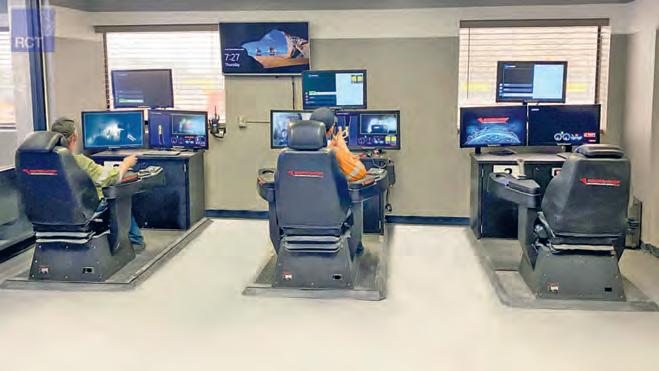
Ability™ System 800xA Mineral Process Control Library comes with a new generation of graphic interface that features a unique alarm system for rapid fault tracing. It is the first HMI to display process information intuitively within its situational context for better collaboration and decision-making, operational efficiency, productivity and safety.”
ABB says it has found through discussions and reviews with process industries customers that the new HMI, which is designed for simplicity of use with a clear, graphic interface, removes distraction for the operator, ensuring that key information – such as abnormal condition alerts – is immediately visible. Rather than showing every individual piece of equipment, the HMI focuses on whole processes – ie a complete milling circuit – while improved navigation ensures a high consistency of information.
“The digital revolution is continuing in mining and other process industries. Growing levels of automation and intercommunication mean it is possible for large plant areas to be managed by fewer people. This adds complexity to daily plant operation and places increasing demands on today’s control room personnel. Visualisation is critical to the process, providing the main interface between humans and the production site. Real time information is much more accessible to operators through the new HMI. Visual control graphics make it easier for all users of the system to take the right decisions in any situation and allow operators, maintenance, and engineers to collaborate in new ways.”
He concludes: “The ability of humans to be able to respond, with good decisions at the right time, is crucial for the optimisation of plant efficiency and reliability. Plants have never been so interconnected, resulting in new opportunities for the automation of process controls and, ultimately, more efficient, safer operations.” The critical role of interoperability in mining automation
Looking at robotic automation solutions in mining, Australia’s Universal Field Robots (UFR) has several new products released and says it is “up to its armpits in interoperability.” Managing Director, Jeff Sterling told IM: “UFR is running robotic machines on surface and underground, within different mining jurisdictions and differing corporate cultures, which presents varied and unique challenges. Machine agnostic UFR Autonomy is our core product and is already integrated into numerous brands, including Caterpillar, Bobcat and Kubota. Customer applications are created by configuring a machine and attachment combination to complete specific tasks and these include loaders, mobile radio coverage and specialised handling tasks.”
He says interoperability is required and needs to exist at multiple levels. “At first level, our UFR Autonomy has integration with the machine to
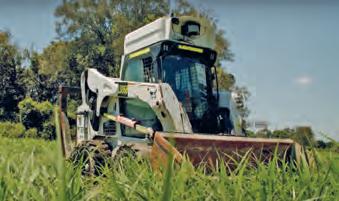
UFR Loader is a current product to deliver teleremote and autonomous capabilities for ancillary tasks in an underground mine block cave automation area
monitor health and capability such as battery voltage, fuel level and sending alerts to the operator. A further level of integration involves various sensors that are required to deliver robotic functions and a third level of integration is the robotic machine with the mine infrastructure for communications, security, GPS adjustment and data curation.”
He says a next level challenge is interaction of multiple vehicles, robots, people, and systems. Collision Avoidance Systems (CAS) are pushed forward with a new ISO standard 21815 part 2 and are applicable for an operator in the seat but it is still early days as to how interoperability is achieved with robotic machines. “Communications are very much at the core of interoperability. This is handled by different layers, protocols and application software and a pandoras box of possibilities exist, including CAN J1939, TCP/UDP, profisafe and websockets. The complexity is daunting, but the magic happens with the clever application and configuration of software realising surprising new capabilities and outcomes.”
UFR Loader is a current product to deliver teleremote and autonomous capabilities for ancillary tasks in an underground mine block cave automation area. UFR Autonomy is being integrated into both of a Bobcat S770 and Caterpillar 262 to provide options for mine operators. The loaders must be interoperable with the mine systems such as traffic management and can be controlled from a control station in a common surface control room.
“Functional safety is a key requirement and UFR has been implementing safety critical communications over propriety systems and we have also developed our own safety critical communications over a protocol. The UFR development better suits mobile equipment and interoperability and can be implemented more readily on mine sites. In more basic terms, this means when the control room operator presses stop the loader will stop as designed and will meet functional safety requirements.”
UFR RadioPOP is a new application implemented on UFR E20C, a 2 t teleremote and autonomous tracked machine. Autonomous equipment, such as drills, require constant communications and failure of this link risks downtime. UFR RadioPOP is a radio point of presence which drives to a location on the mining bench to support up to around six drills. “At the required location, UFR RadioPOP establishes a high bandwidth microwave data link with the mine network and extends a 9 m mast to rebroadcast radio coverage to the drills. When a blast is to be completed, the machine is driven from the control room to a safe place away from the blast. In a future release, autonomy will be implemented to the driving. UFR RadioPOP also has a pan tilt zoom camera on the mast, allowing remote control room operators to observe activity from a high vantage point and the implementation of safety surveillance.”
In a more future facing horizon, Sterling says UFR’s development will advance persistent autonomy. UFR is collaborating with partner companies Earth Technologies’ digital twin for earth movement to create discreet commands to control robotics, and with GlassTerra to scan, monitor and map the new mine surfaces. “The intent is to compare the created work with the digital twin plan and use AI to update the planning settings. In this way, autonomous operations can be orchestrated reliably at a high level and achieve increased levels of reliability and independence of operation. We hope for this to become version 4.0 of fleet management. We will demonstrate future scenarios with the aim of controlling all machine activities on the mine and minimise the need for operators to be in the loop to achieve persistent autonomy.”
Sterling says the newness and novelty of these challenges is absorbing much discussion with mine and robotics cross functional teams. “Seemingly simple things like symbols are potentially challenging, by needing to convey meaning to operators with different cultures and ethnic backgrounds. Introducing automation requires re-engineering processes and workflows and a high level of attention to human factors. UFR has developed a granular development process to evaluate the new ways of doing things and to map human interaction with the system and the GUI (Graphical User Interface). Success will be determined when operations begin, and only minimal changes are requested.”
UFR is continuing to develop new functions to accelerate adoption and customer benefits, which has led to 4 product releases this year alone. “Enhanced capabilities and new customer requests can be developed on one site and then rolled out to sites around the world to quickly spin up new benefits. What we are now seeing with digital transformation in mining is tremendous, stranded value being unlocked that can be harvested by savvy and progressive organisations.”
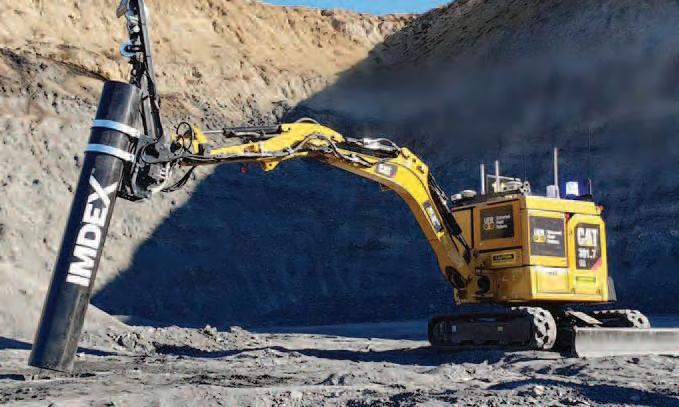
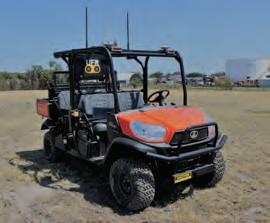
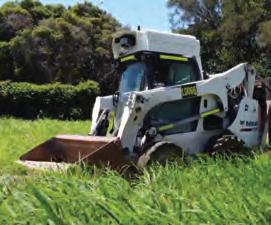
Accelerate your automation with mine proven technology universalfieldrobots.com.au +61 7 3666 0006 hello@universalfieldrobots.com.au Electrificiation of mines and autonomy
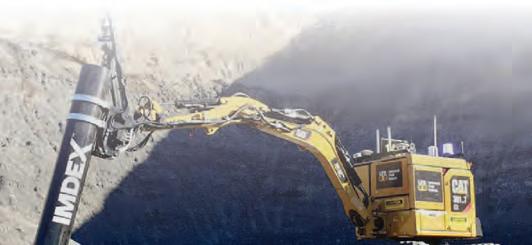
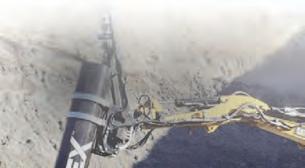
There is active investment by the industry to further optimise operations for increased efficiency outcomes, while concurrently implementing a decarbonisation agenda. Many efficiency improvements in recent years have been realised with the increased adoption of an autonomous haulage system (AHS) mining method. And as RPMGlobal’s Simulation Product Manager Adam Price points out, the uptake of integrated autonomous trucks doesn’t look to be slowing down. During 2021, Komatsu expects to exceed 400 operating autonomous trucks
globally, while adoption of fully autonomous drilling on site is also accelerating. Alongside the industry’s increased adoption of automation is a steadfast focus on decarbonisation, in line with the industry’s move to net zero emissions.
Price told IM: “The role automation and technology can play in enabling electrification of mines is a key discussion point for the industry at present. The industry’s preference to displace diesel and look to the uptake of mining technologies that support a safer, more sustainable and productive operation will result in an even further increase in autonomous systems in the coming years. With automation and haulage efficiency key factors in the industry’s emission reduction aim, there will be increased uptake of hybrid vehicles over the next decade as a stepping-stone from dieselpowered to entirely battery electric trucks. In a hybrid landscape, there is a trade-off between the amount of battery storage capacity and the size of the engine to power the system, which is where RPMGlobal’s simulation technology can model the energy flow in and out of the battery system.”
In the future state of autonomous and battery electric vehicles – whereby trucks are charged from overhead lines and regenerative breaking— haul trucks will have to navigate the logistics and interactions of the chargeable trolley line. “In this situation, an autonomous system leveraging technology that models this out-ofthe-box interaction and the different charging philosophies will be able to assist directing traffic on site to ensure the truck maintains its state of charge to within the working range required. Miners will also increasingly need the ability to calculate the projected cost and emissions savings that are involved with a battery/diesel hybrid model for their autonomous fleet as a way to overcome the challenge of charging methods. RPMGlobal has recently added battery electric vehicle support to its haulage simulation platforms to further assist companies in their decarbonisation mission.”
The company also argues that it is also important for miners to realise that agility is key to extracting the desired efficiency benefits when operating in an autonomous environment. “One of the key imperatives to leveraging the productivity and safety benefits of an autonomous operation is ensuring the right instructions are given to the right equipment when it’s required. In an autonomous operation, the plan is critical to each task being completed so it needs to be continuously maintained and updated through the provision of real-time data.” RPMGlobal says it has led the charge in recent years on getting data from fleet management and high precision GPS systems to inform the mine plan, and communicate the updated plan back to the operation. “RPM’s scheduling and operational solutions allow mining companies to update the plan as required, and make changes based on factual and reliable data that is coming from one source of truth. In an autonomous environment, this results in complete end-to-end visibility of live planning and scheduling information to create a single source of truth for multiple departments. With innovative software solutions, autonomous-controlled mine sites are able to obtain the agility they need to extract

RPMGlobal has recently added battery electric vehicle support to its haulage simulation platforms
PROCESS OVERVIEW
AACHEN HIGH SHEAR REACTORS TM EAR REACTOR
TECHNICAL LIBRARY
BACKGROUND
The Aachen reactor is a reThe Aachen highly efficient mass transfer device developed alongside Maelgwyn’s Imhoflot flotation technology. Imhoflot flotation techn
The unit can be used for any application where it is required to intimately The un mix a gas with a liquid but has been found to be found particularly suitable for gold leaching applications where it is required to boost the dissolved g oxygen levels enoxy of slurry either prior to, or during the leach reaction. q reaction.
it can be used fo een
USES
Can be used to e ubCan increase the leach kinetics in r gold and silver ve cyanidation. cyanida By thinning the Nernst diffusion layer and removing the passivation deposits. removin
Aachen applications for gold ores include:
Oxides
Transitional material
Refractory ores
Gold tailings retreatment BENEFITS
I Increased gold recoveries/lower renc residue grades resid Accelerated leach kinetics Acce Reduced cyanide consumption Improved oxygen utilisation Increased tonnages without compromising recovery SUITABILITY SUITABILITY
Aachen reactors are particularly particularly suitable for suitable for the treatment of transitional material ansitional material consisting of a mixture of oxide and sulphides, or where sulphide grades are too low/variable for flotation.
Aachen reactors may be applied in a variety of ways. Can be used on a variety of ore types to increase gold and silver recoveries:
Pre-Ox
AAL - Aachen Assisted Leach
Leachox™
Currently there are over 60 Aachen reactors installed globally.
WATCH THE VIDEO WATCH T
AACHEN
HIGH SHEAR REACTORS

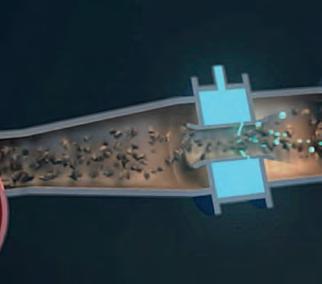
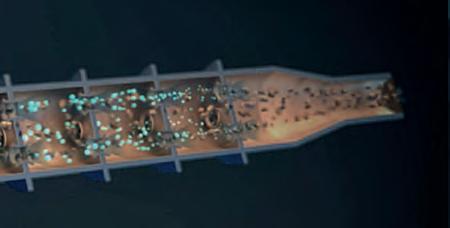



productivity benefits while jointly working towards their decarbonisation vision.”
Speeding up transition to autonomous mining
Alexey Yakovenko, CEO at Zyfra Robotics, outlined to IM its latest tech advancements and what factors may help the industry move towards autonomous mining. “Not so long ago almost all mining processes were managed directly in the open pit. Later, when mining fleet dispatching programs became available, the need for a dispatcher on site disappeared, and now – as a further step – autonomous and teleoperated dump trucks, drill rigs, bulldozers and other mining equipment are passing the ‘early adopters’ phase, enabling the industry to move people out of remote and/or dangerous zones and let them manage the respective processes from a safer place.”
Yakovenko said some principal factors are contributing to the speeding up of this process. “First, the impact of autonomous vehicles on mine safety can change the game in the near future from being incremental to fundamental. While simply introducing autonomous trucks can lower the probabilities of operator error and subsequent accidents, arranging autonomous trucks in a pack with an unmanned shovel can create a zone where human presence is only occasional, potentially changing the safety requirements for the respective area.”
For example, at an eastern European minesite, Zyfra has deployed a fully unmanned loading zone: two autonomous dump trucks work in connection with a tele-operated wheel loader. “Safety is an important question in the context of reducing expenditures on mine development. For the formation of a new pit, millions of tonnes of rock are moved out only to shape the pit to avoid landslides and rockfalls. No doubt, if only autonomous machines work in a mine, it will still be designed to protect the equipment against landslides and rockfall, but the risk level can be different and hence safety requirements can be lower. This may lead to significantly smaller volumes of waste to build the mine and hence lower expenditures.” Next up is productivity of autonomous solutions, which has been a talking point as initially autonomous machines were slower than human operators. “Now the technology has reached a higher level of productivity in many processes. Our autonomous drill rig can show an availability increase of up to 13%, and it also features typically a 4% increase of drilling speed over conventional drills. Another example is an operation with multiple autonomous haul trucks showing approximately 7% increase of cruise speed at night – as LiDAR and radar sensing are independent of light conditions while human operators tend to drive slower at night.”
Yakovenko says the increase of productivity can be utilised in different ways: the mine may choose to increase volume or keep the pace and reduce the number of equipment, lowering expenses and carbon footprint.
Thirdly, the industry trend towards carbonneutrality in mining operations is driving leading OEMs to accelerate the development of carbon emission-free equipment. In combination with autonomous technology, they can make a significant contribution to decarbonisation. “However, as our experience shows, mining operators can achieve good results already by using autonomous solutions for existing machines on traditional fuel. As an example, at a coal mine in Khakassia our autonomous dump trucks typically save 13% fuel per mass hauled as compared to trucks with human operators”.
Another factor already apparent is that autonomous technology can reduce strain on machinery and therefore extend equipment life. “While avoiding strain peaks, average productivity can even be increased: algorithms managing the acceleration of a truck or the process of a drill rig can optimise process efficiency while monitoring the streams of data with more scrutiny than is possible even for an experienced human operator. Less strain means lower repair costs and less downtime.” For instance, Zyfra’s ZR RoboDrill features a realtime safety protocol which monitors drilling pressure and engine load. Telemetry comparison shows that in multiple occasions the automated system reacts faster to strain peaks than trained drill operators, keeping the equipment within acceptable limits.
Falling costs for hardware are also having a positive automation impact. “Zyfra Robotics develops autonomous solutions for mining processes such as drilling, excavation, loading, and haulage for use with most OEM equipment. When we speak about buying an autonomousready machine which costs millions of US dollars, a robotics kit for it can include expensive sensors and other hardware, and still pay off. However, many clients are interested in retrofitting their existing equipment, and there the cost of every component matters. LiDARs, radars, on-board computers, edge computing devices and equipment for wireless communication are becoming more affordable, and this means faster payback. For example,
Alexey Yakovenko, CEO at Zyfra Robotics
Get the SCOOP on the latest in
COLLISION AVOIDANCE TECHNOLOGY OmniPro®
A.I. Collision
Avoidance
Camera
Safety
System
NIOSH 2020 No wearable award-winning device or equipment VAI technology tags required See OmniPro at
Booth 2803 - North Hall
www.matrixteam.com sales@ MatrixTeam.com
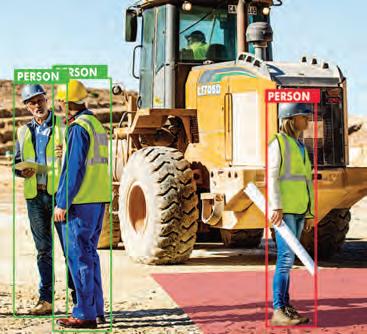

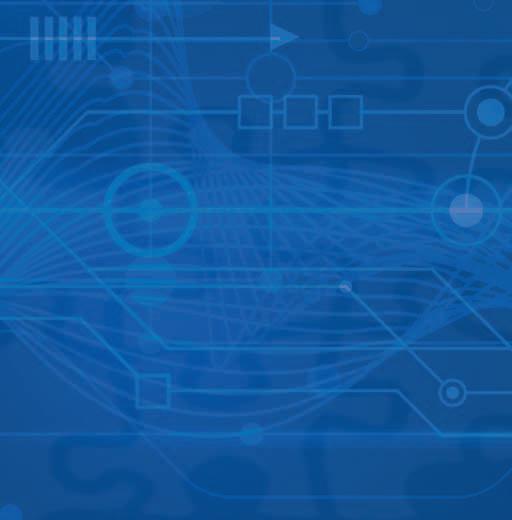
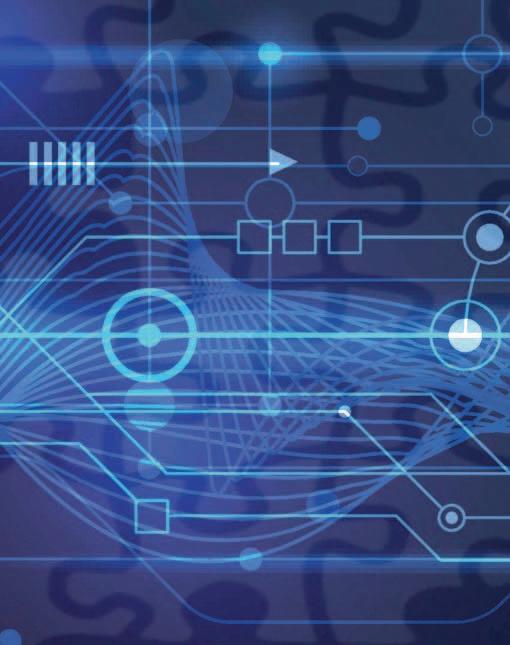
only a decade ago, a LiDAR system cost $50,000, while today you can buy a LiDAR unit for $5,000. In a few years, with technological advancements and higher production volumes, its cost may drop down to roughly $500.”
At the same time, in recent years tremendous computing power has been brought to mining in the form of edge computing to the pit and onboard machines. “Efforts of chip producers, from traditional ones like Intel, through new leaders like NVIDIA and Alphabet, to more specialised players like Mythic and Xilinx, are bringing tremendous amounts of computing power to vehicles. For example, NVIDIA’s current edge computing power champion AGX, with 30 trillion operations per second (TOPS), will soon lose its performance title to the NVIDIA Orin with 254 TOPS, and upcoming Atlan will provide more than 1,000 TOPS. With the cost of the edge device staying roughly the same, it will allow more computational load on a device, thus simplifying solution architecture, improving functionality and decreasing cost.”
Rapid software development in the field of decision-making algorithms, environment scanning and result interpretation also helps to create autonomous mining systems. “The last decade has seen tremendous work, scientific and technological, put into the field of selfdriving cars. Of course, these efforts have been focused on vehicles operating on public roads, and most of the practical results cannot be transferred directly to the less structured, rough and hazardous environment of a mining pit. But advancing the autonomous sensing, path planning, situation analysis and internal diagnostics of the future driverless taxis have yielded also quite some results which can be used in developing software and systems for autonomous mining equipment, and this can lower development costs for the latter.”
Another area with outstanding progress highlighted by Yakovenko is Artificial Intelligence (AI). “In ten years, AI grew from an opaque academic field of study to an almost ubiquitous wide-spread technology. It was not only due to the growth of the raw computing power – the theoretical advances and application practice resulted in the significant growth of computational efficiency of AI models and algorithms. OpenAI researchers found that the algorithmic efficiency of AI-based computer vision improved more than 40 times in seven years. These advancements allow us to implement more complex scenarios and to run a wide variety of AI methods on cost-effective hardware.” Availability and speed of support play a crucial role in effective deployment of any technology in mining and automation can help here as well. “Although maintenance and repair of the hardware requires ‘old-fashioned work,’ intelligent diagnostics integrated in the autonomous and tele-operated solutions can pinpoint the place of malfunction, and often also its cause. This can go as far as our system placing detailed support requests automatically right after equipment malfunction or even before, leading to quicker response and, ultimately, higher uptime.”
Today, almost all major mining equipment OEMs offer autonomous-ready machines, often together with controlling software, and some of them also retrofit their higher capacity range and newer models. “This encourages third-party autonomous solutions providers to cover a wider range of equipment models for retrofitting. We at Zyfra Robotics, pursuing the concept of vendor-agnostic autonomous solutions, have already demonstrated our technology at work with equipment of many different manufacturers. Also, we participate in a number of ISO workgroups and other industry-relevant organisations to keep our solutions in line with current industry approaches and requirements. Overall, this competition is good for the mining industry, as mining operators can try several solutions and select one that fits in with all other systems already implemented on their site.”
IM
SAFE WIRELESS CONTROLS
Universal Remotes for Industrial use
Products with CAT3, SIL3, PLd/Ple available
Independently certifi ed
Safety Levels
Test Units and Demos Available! info@tele-radio.com
Tele Radio, a Swedish Company with a Global Network of Subsidaries, dealers and partners has designed, developed and manufactured standard and custom industrial grade radio remote controls for more than 65 years. Using latest technology has allowed us to provide quality, reliable, State of the Art Control systems, meeting and exceeding highest Safety Standards for:
Cranes & Material Handling - Agriculture & Forestry Equipment - Mobile Hydraulic Machinery – Emergency & Recovery Vehicles - Industrial Doors & Gates – Propane and Tanker Trucks – Construction Equipment & Machines – Pumps & Aggregates, PLC Control – Recycling Machinery and more…










